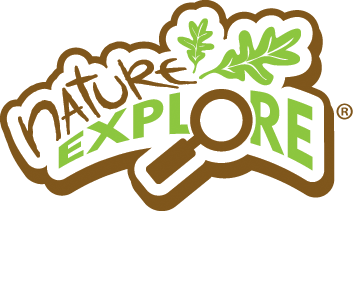Word Muse: Collaboration
by Tina Reeble, Education Specialist,
Dimensions Educational Research Foundation and Nature Explore
“Collaboration is not a passive phenomenon; it requires risk taking with some passion about it. Collaboration that leads to meaningful learning often begins with someone’s (or something’s) act of provocation and the willingness of another to become engaged.” (Collaboration, Conflict, and Change: Thoughts on Education as Provocation by Jones and Nimmo (Young Children January 1999).
With this in mind, I have been pondering the grown-up term-collaboration and how it applies to young children. It is a process of working together that really breaks down into life skills that we all need and ones that are a priority in early childhood social/emotional development; cooperation, communication, negotiation, and conflict resolution. When and where do children and youth learn these skills? When do they see collaboration in action? When do they practice and use these skills? I think these questions are of the utmost importance as we face the unintended consequences of our media driven society where there is even less practice of collaboration taking place.
I am particularly excited to think about the collaborations that children experience in our Nature Explore Classrooms. As they are immersed in daily play and learning that connects them to nature, children are supported by teachers who work along- side them, modeling and supporting the students as plans are made, tools are shared, ideas are expanded. In a broader sense, nature provides a model of collaboration at its finest in the way the bees help the flowers, the plants give us lettuce to eat a snack time, a rotten log becomes a home and food source for other living things.
Put it all together and opportunities to learn and practice skills of collaboration abound. I am remembering an observation from a colleague, Kathy Tichota taken at Dimensions Early Education Programs in Lincoln, NE.
Mira, Michelle and Marcy were following butterflies in the outdoor classroom, trying to catch them. “Shhh…I got it,” Mira says to her friends, “It was on my head.” Michelle replies, “Hey, how ‘bout they are magical, they make us fly.” Mira agrees to the new idea, “Yeah, if you touch them, they make you fly.” The girls ‘fly’ to Mrs. Tichota shouting, “Guess what!” Mira shows the small butterfly she is holding in her hand. The butterfly is lying on its side. Mrs. Tichota asks, “How did you catch it?” Marcy joins in the conversation, “I saw something in the chips. It can’t fly. It was just lying, moving around in there. I think someone stepped on it. I think it might die.” “No!” Mira insists, “It’s alive! I saw it jump. It jumped all the way up on my head.” She then adds, “Hey how ‘bout we let it go?” “Yeah!” her friends exclaim and off they run, their arms fluttering in magical flight.
I know you must have stories of collaboration in your outdoor classroom too. Please share one of them with me and think about the deep learning that is taking place the next time you hear “Hey! How ‘bout…” as they connect with nature, their classmates and you.
Our next word is Dirt. Be bold, choose to be extraordinary, and I will see you next week.

